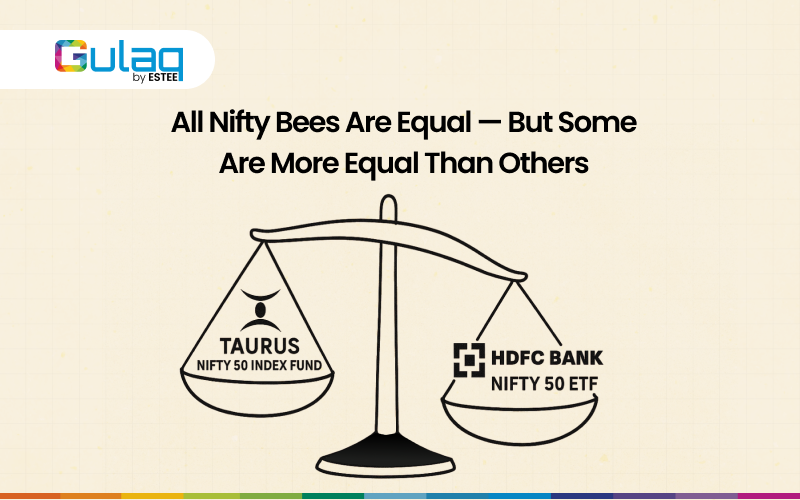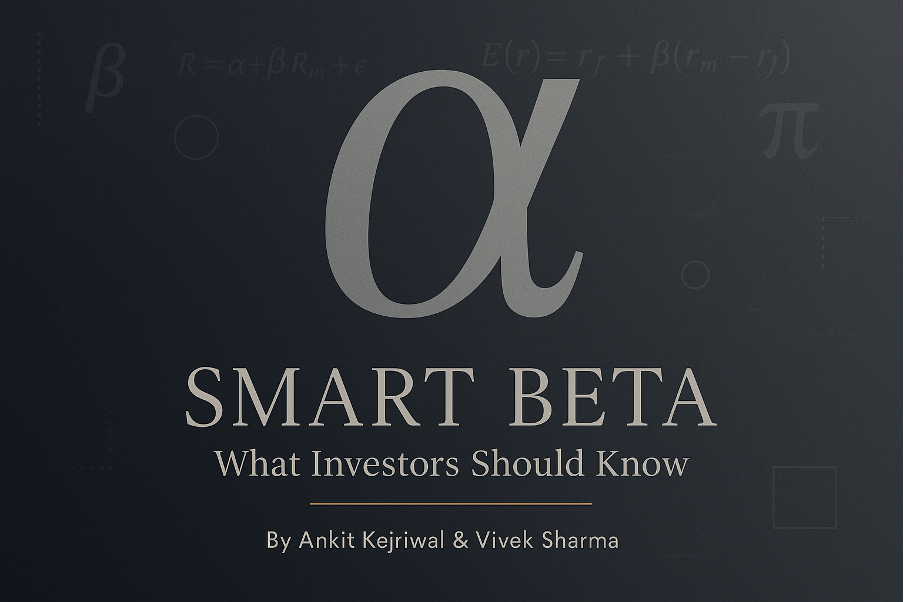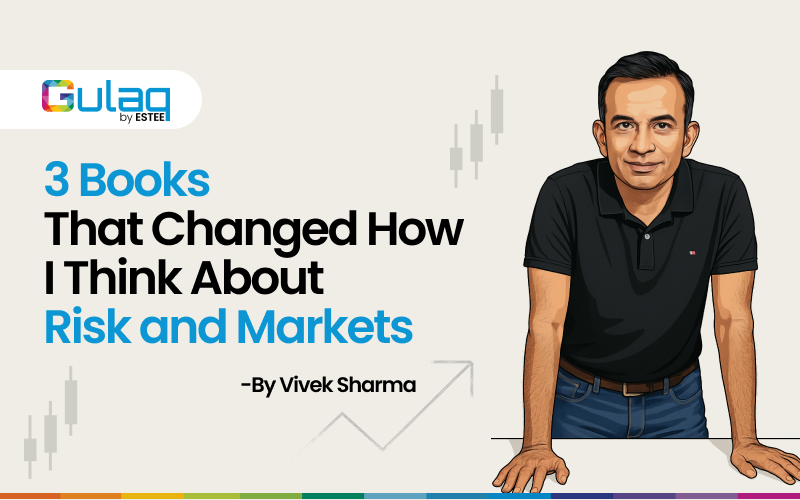
All Nifty Bees Are Equal — But Some Are More Equal Than Others
The title, inspired by George Orwell’s classic Animal Farm, perfectly captures the essence of this blog’s topic – Index Funds.
Nifty bees are index funds that track the Nifty 50 index. I say that all Nifty bees are equal because they all track the same underlying benchmark, i.e., Nifty 50. However, I say that some are more equal than others because some do a better job at mirroring their underlying index than others.
For instance, Nifty 50 TRI produced 10.09% returns in CY 2024. There are almost 40 index funds/ETFs that try to mirror this performance. However, not all are able to achieve the same results.
HDFC Nifty 50 ETF, for instance, produced 9.9% in CY 2024, only 0.19% lower than the underlying index, whereas Taurus Nifty 50 Index Fund was only able to produce 8.78%, a total of 1.31% lower than the underlying index.

With almost 40 index funds/ETFs tracking Nifty 50 alone and over 500 index funds in total, a question arises – how do you select an index fund?
In this blog, I attempt to answer this question, and towards the end, I also discuss some of the problems that I see with the rise of index investing.
But first, let’s set the foundation right.
What are Index Funds?
An index is a theoretical concept. It’s a paper portfolio. You can’t directly invest in Nifty 50 or Nifty Smallcap or any index for that matter.
To gain exposure to the index, you have to invest in what is called an index fund. An index fund’s sole objective is to try to mirror the performance of the underlying index.
The AMC of the index fund does not have to invest any resources in research or due diligence for stock selection; they only have to buy the stocks that are in the index in the same proportion and try to minimize the tracking difference – the difference between the index returns and index fund returns.
However, because the AMC is trying to replicate a paper portfolio, it is not possible to perfectly mirror it. Thus, index funds naturally have some deviation of returns from the index returns. AMCs compete with each other in terms of lowest cost (expense ratio) and lower tracking error – average deviation of returns of the index fund from the underlying index.
This tracking difference arises because the index itself is not static. It undergoes periodic changes. Nifty 50, for example, undergoes rebalancing twice a year – once in March and once in September. In the rebalancing, weights of the stocks are reset to their intended levels with some inclusions or exclusions. Most equity indices have semi-annual rebalancing schedules; however, some strategic factor-based indices that have recently been gaining a lot of popularity undergo quarterly rebalancing as well.
Index funds have to observe the changes in the underlying index and incorporate them with the goal of minimizing the tracking difference.
SEBI requires that at least 95% of the total assets of the index fund must be invested in securities of the underlying index.
The remaining 5% can be held in cash or money market instruments or can be deployed in closely aligned derivative strategies to reduce the tracking difference.
In our example that we saw at the beginning of the blog, HDFC was able to do a much better job at mirroring the performance of the Nifty 50 than Taurus. This difference is attributed to the strategies they used to minimize the tracking difference.
Types of Index Funds
Broadly, there are three types of index funds:
Equity index funds track equity indices like Nifty 50, Sensex, or Nifty Next 50.
Debt index funds, which are not very popular in India and are still scarce, but a few examples include Nifty Bharat Bond or Nifty SDL.
As per the earlier regulations, passive funds had to be based on either an equity index or debt. There were no hybrid funds specific to passive schemes.
However, in December 2024, SEBI came out with a circular to allow the introduction of hybrid index funds that track hybrid indices from the effective date of March 16, 2025. However, as of today, no investible ETF/Index Funds are available in the market.
Equity Index Funds
Equity index funds are the most popular type of index funds. There is a total of Rs. 11 lakh crores [1] that is invested in index funds/ETFs, and most of it is in equity funds.
You will largely find four types of equity index funds:
Broad-based index funds mirror broad-based indices like Nifty 50, Nifty Next 50, Nifty 500, etc. They include a large number of stocks and provide a comprehensive representation of the overall market.
International index funds invest in international indices like S&P 500 or Nasdaq 100.
Sectoral/thematic indices narrowly focus on a particular group of stocks that share common characteristics.
Finally, there are some strategic or factor-based indices that are designed based on quantitative models/investment strategies to provide a single value for the aggregate performance of a number of companies.
In total, there are over 500 different investible index funds/ETFs available in the market. And for each index, several AMCs offer similar index funds/ETFs.
So how does one choose an index fund?
How to Select an Index Fund/ETF
Index Fund vs. ETF
There is a basic difference between index funds and ETFs. Index funds are like any other mutual fund where you directly transact with the AMC. ETFs, on the other hand, are characteristically more like stocks. You can buy or sell them in the open market.
A comprehensive study of 16 index mutual funds and 14 ETFs in India revealed that ETFs exhibit notably lower tracking errors than their mutual fund counterparts (Dhabolkar & Reddy, 2019). The average tracking error for the selected index mutual funds was 0.003669, while for the selected ETFs it was 0.001136 – making ETF tracking errors about three times lower. The research attributes this superior tracking performance to ETFs’ in-kind creation and redemption process, which facilitates better arbitrage and pricing efficiency.
Thus, going for ETF option rather than Index fund of a particular index might be a better choice. However, both index funds and ETFs are able to significantly replicate the performance of the index, and the difference is very minor.
Selection Criteria:
Decent track record – There’s no point in choosing a new index fund just because it has a slightly lower expense ratio. Invest in index funds/ETFs that have at least 2 years of track record.
Don’t select funds that beat the index – If an index fund beats the index, it’s not doing its job properly. Ideally, an index fund should never beat the index. Thus, if the index fund’s performance is too high or too low compared to the underlying index, this means there is higher risk in that fund, and you should avoid it.
Tracking error – The risk of an index fund is measured by tracking error. Tracking error measures, on average, how much the return of the index fund deviates from the index. The lower the tracking error, the better.
Whichever index you decide to invest in, you can visit AMFI’s website and look for the tracking error and select the one that is among the lowest, while also considering other factors like expense ratio, fund size, reputation of the AMC, etc.
Problem with Index Funds
Lastly, I want to speak about some problems I see with index investing.
Index funds are a great investment option for most people. As per the SPIVA report, you would likely outperform more than 80% of active funds and can enjoy a decent stress-free investment journey.
However, there are some problems I see with index investing that deserve to be highlighted.
First, there is a problem of free-riding with index funds. Managers of index funds compete on offering the lowest expense ratio and thus do not actively participate in the governance of companies in which they hold massive stakes. They rely on other active investors to monitor governance and ensure companies work in shareholders’ interests. However, if there aren’t enough active investors in a particular company, the checks and balances that active investors provide by participating in company policies break down, and in corner cases, this can raise governance issues.
Secondly, by investing in index funds, you are resigning yourself to earning average returns. While empirical data suggests you would outperform about 70-80% of active funds, the remaining 20-30% would outperform you, which can lead to emotional regret, especially if someone you know has outperformed your returns.
Lastly, with index funds, there is no active risk mitigation. So even if a manager anticipates an imminent market downturn, the index fund cannot deviate from the index composition. This rigidity is both a feature and a limitation of index investing.
Bottom Line
Index funds are undoubtedly one of the most sensible investment choices for the majority of investors. They offer simplicity, low costs, and the ability to outperform most active funds without the stress of constant decision-making. However, like any investment strategy, they come with trade-offs.
The key to successful index investing lies not just in choosing index funds over active funds, but in selecting the right index fund. Focus on funds with proven track records, low tracking errors, and reasonable expense ratios. Remember, the goal isn’t to find the fund that occasionally beats the index – it’s to find the one that most consistently mirrors it.
While index funds may limit you to average market returns and lack the flexibility of active management, they provide something equally valuable: peace of mind and the mathematical probability of beating most professional fund managers. For most investors, that’s a pretty good deal.
Related Posts
Smart Beta Strategies: What Investors Should Know Before Investing
Smart Beta Strategies: What Investors Should Know Before Investing As of August 2025, Indian mutual…
Process Matters More Than Outcome
I have spent nearly a decade of my life trading energy derivatives, and today I…
Is Market Cap the Best Way to Build an Index?
Nifty 50 is a free-float weighted index – a slight variation of market cap weighted…
3 Books That Changed How I Think About Risk and Markets
Over the past two decades, I’ve built a quiet but consistent habit — reading. Not…







